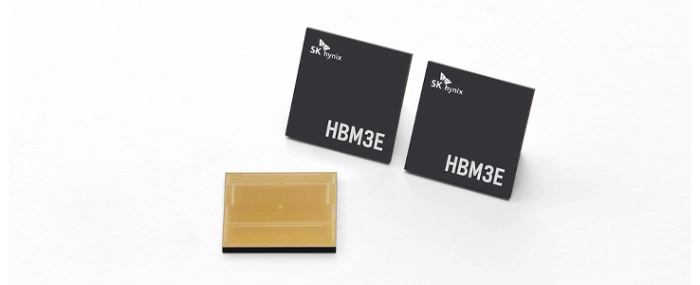
HBM3e to reach 35% of advanced wafer input by 2024
TrendForce reports that the three largest DRAM suppliers are increasing wafer input for advanced processes. Following a rise in memory contract prices, companies have boosted their capital investments, with capacity expansion focusing on the second half of this year.
It is expected that wafer input for 1alpha nm and above processes will account for approximately 40% of total DRAM wafer input by the end of the year.
HBM production will be prioritised due to its profitability and increasing demand. However, limited yields of around 50–60% and a wafer area 60% larger than DRAM products mean a higher proportion of wafer input is required. Based on the TSV capacity of each company, HBM is expected to account for 35% of advanced process wafer input by the end of this year, with the remaining wafer capacity used for LPDDR5(X) and DDR5 products, according to TrendForce.
Regarding the most recent advances in HBM, TrendForce predicts that HBM3e will become the market mainstream this year, with shipments concentrated in the second half. Currently, SK Hynix, along with Micron, are the principal suppliers, both using 1beta nm processes and already shipping to Nvidia. Samsung, which is employing a 1alpha nm process, is expected to finish qualification in the second quarter and begin deliveries in mid-year.
In addition to the increasing proportion of HBM demand, the growing content per unit in PCs, servers, and smartphones is driving up the consumption of advanced process capacity each quarter. Servers, in particular, are seeing the highest capacity increase — primarily driven by AI servers with content of 1.75 TB per unit. With the mass production of new platforms like Intel’s Sapphire Rapids and AMD’s Genoa, which require DDR5 memory, DDR5 penetration is expected to exceed 50% by the end of the year.
Meanwhile, as HBM3e shipments are projected to concentrate in the second half of the year, coinciding with memory demand's peak season, market demand for DDR5 and LPDDR5(X) is expected to increase. However, due to financial losses in 2023, manufacturers are being cautious about their capacity expansion plans. Overall, with a higher proportion of wafer input allocated to HBM production, the output of advanced processes will be limited. As a result, capacity allocation in the second half of the year will be critical in evaluating whether supply can meet demand.
Potential DRAM supply shortage due to HBM capacity prioritisation
If advanced process capacity is not expanded sufficiently, the increasing focus on HBM production could result in a DRAM supply bottleneck. Currently, new plant plans are as follows – Samsung expects existing facilities to be fully utilised by the end of 2024. The new P4L plant is expected to be completed in 2025, while the Line 15 facility will transition from 1Y nm to 1beta nm and above. The capacity of SK Hynix's M16 plant is expected to increase next year, while the M15X plant is scheduled to be completed in 2025, with mass production starting at the end of next year. Micron's Taiwan factory will return to full capacity next year, with future additions centred in the United States. The Boise facility is currently expected to be completed in 2025, with equipment installations following and mass production planned for 2026.
TrendForce states that while new plants are expected to be completed in 2025, the timetables for mass production are still unknown and will be determined by 2024 profitability. This reliance on future profits to fund further equipment purchases is believed to reinforce the manufacturers’ commitment to maintaining memory price increases this year.

